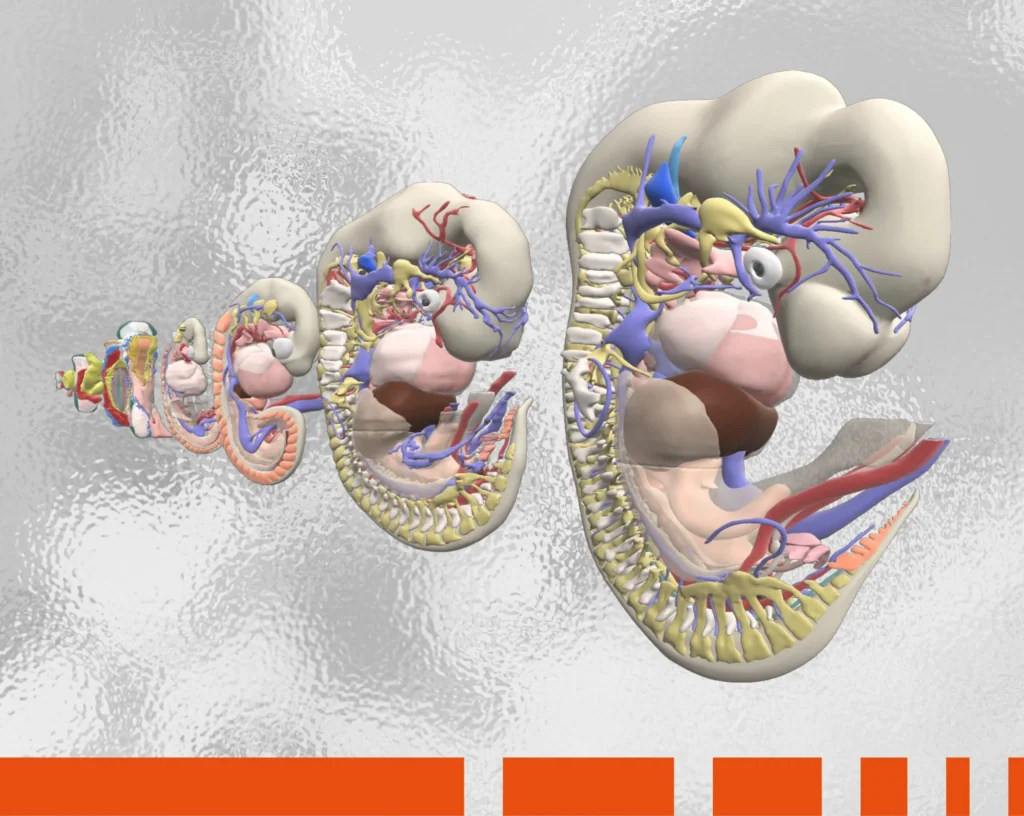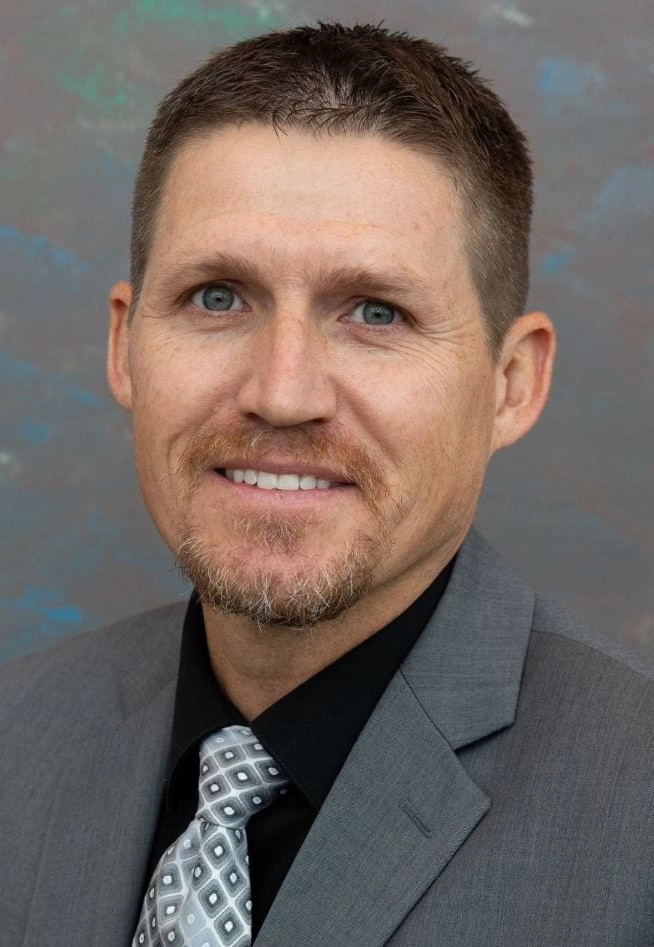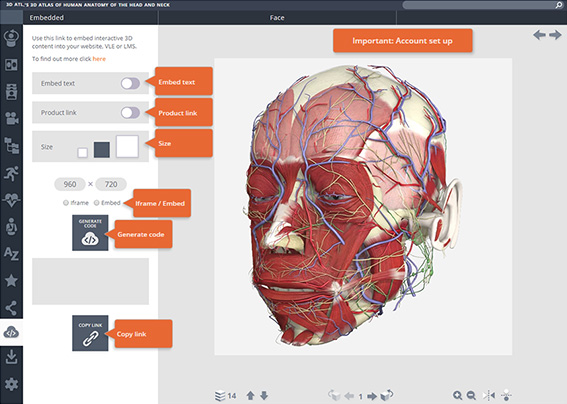“I took a look, I saw Primal’s Embed feature, and I was like, sold!” says Eric Greska, an assistant professor at the University of Delaware who teaches anatomy and physiology as well as some kinesiology and biomechanics courses.
Greska first came across Primal Pictures when restructuring the Department of Kinesiology and Applied Physiology’s anatomy and physiology courses to adopt a flipped classroom approach. He wanted to insert various snippets from Anatomy.tv – videos, interactive images, and quizzes – in exactly the right places within his course content in Canvas, the university’s learning management system (LMS).
So, when exploring Anatomy.tv’s latest updates, he was thrilled to discover that all he needed to do was click the Embed button and then copy and paste a bit of code. He hasn’t looked back since. “That was just for my anatomy and physiology courses,” he says. “And then for my other courses, I just kept on pulling stuff in because … it’s freely available [with the university’s subscription]. So, why not use it?” (Watch a video of the embed function.)
It came up as a question from those who hadn’t experienced working with material like this – what’s the upkeep? And there really is not much upkeep.
Eric Greska
Enriching Course Materials Made Simple
What Greska likes best about Primal’s Embed function is how quick and easy it is to enrich his course materials using the same trusted content he’s always used on Anatomy.tv. So easy, in fact, that he’s never even used the site’s help features. “I just saw that it said, Embed, and then you can go choose Canvas,” he says.
And as the embedded content retains its original dynamic functionality, Greska’s students can rotate, layer, highlight and use the labelling for interactive images or simply play, pause, and replay the videos.
This means Greska can custom build his course content to make things click for students. For example, you can choose one of the three viewer sizes or insert or hide descriptive text.
“As professors we can stand up there and explain things until we’re blue in the face. But, you know, some students just aren’t going to get it until they actually visualize it for themselves,” he explains.
Engaging Students to Improve Performance
Embedding Primal’s content directly in Canvas has improved student engagement, according to Greska. When Primal’s embedded videos, animations, images, slides, and quizzes sit alongside his recorded lectures, “I can capture as many of the students as possible no matter what their best learning method is,” he says. This means less students wandering off and getting lost in a sea of not-always-trustworthy YouTube videos.
And Primal’s content goes beyond building strong foundations in anatomy and physiology to meet the wider needs of Greska’s students, who also study exercise science, athletic training, physical therapy, or plan to attend med school. “It’s not just anatomy and physiology, you have exercise videos and also ultrasound,” says Greska about Anatomy.tv.
Saving Time & Future Proofing Learning Resources
Greska is also saving a whole heap of time by embedding Anatomy.tv content directly in his course materials in the university’s LMS. “I sit on a committee for open access to open resources, and it came up as a question from those who hadn’t experienced working with material like this – what’s the upkeep? And there really is not much upkeep,” he says.
This benefit proved invaluable in making a swift but smooth transition to full-throttle remote learning at the start of the COVID-19 pandemic. Greska says “Because we had all that content from Anatomy.tv already built in there, it was a very, very fast transition for us.”
Greska is now helping other faculty members future-proof and update their courses with embedded content from Anatomy.tv. “If something like this happens again, then they can very quickly switch over and have all these resources available for their students,” he says.
Measures of Success
Embedding Primal’s content directly in coursework is a big hit with students, as revealed through tracking analytics that show ever-soaring usage and positive student reviews.
“One of the big things is that they just really enjoy the amount of material that they have to study with,” says Greska. “And for everything that we’re able to give to these students, it has definitely improved their performance.”


